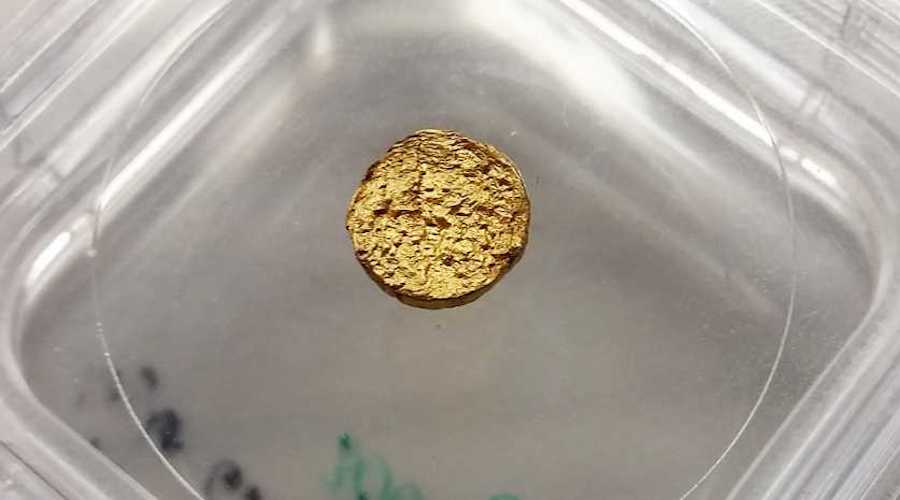
Researchers from the Swiss Federal Institute of Technology in Zurich created a lightweight 18-carat gold nugget, using a matrix of plastic in place of metallic alloy elements.
In an article published in the journal Advanced Functional Materials, the scientists explained that instead of a metal alloy element, they used protein fibres and a polymer latex to form a matrix in which they embedded thin discs of gold nano-crystals.
While the plastic gold will be in particular demand in the manufacture of watches and jewellery, it is also suitable for chemical catalysis, electronics applications or radiation shielding
First, they added the ingredients to water and created a dispersion. After adding salt to turn the dispersion into a gel, next they replaced the water in it with alcohol.
Then, they placed the alcohol gel into a pressure chamber, where high pressures and a supercritical CO2 atmosphere enabled miscibility of the alcohol and the CO2 gas; when the pressure was released, everything turned it into a homogeneous gossamer-like aerogel. Heat was further applied afterwards to anneal the plastic polymers, thus transforming the material and compacting into the final desired shape, yet preserving the 18-carat composition.
This new form of gold weighs about five to 10 times less than traditional 18-carat gold.
The conventional mixture of lighter gold is usually three-quarters gold and one-quarter copper, with a density of about 15 g/cm3. The new lightweight gold’s density is 1.7 g/cm3.
“This gold has the material properties of a plastic,” one of the study’s authors, Raffaele Mezzenga, said in a media statement. “If a piece of it falls onto a hard surface, it sounds like plastic. But it glimmers like metallic gold, and can be polished and worked into the desired form.”
According to Mezzenga, it is even possible to adjust the hardness of the material by changing the composition of the gold or to replace the latex in the matrix with other plastics, such as polypropylene, which liquifies at some specific temperature.
Furthermore, the shape of the gold nanoparticle can change the material’s colour: “nanoplatelets” produce gold’s typical shimmer, while spherical nanoparticles of gold lend the material a violet hue.
“As a general rule, our approach lets us create almost any kind of gold we choose, in line with the desired properties,” Mezzenga said.
5 Comments
Robert
Tell me again how something that is 3/4 gold weighs 1/10th as much as pure gold.
Mark Wagner
I believe what they are saying is the gold component of the “alloy” is 3/4 (18K).
Freedom Seeker
“our approach lets us create almost any kind of gold we choose”
NO – gold is gold. This is gold infused plastic.
People who appreciate gold want gold. For fooling people w/ fake jewelry gold plating has been around forever, a much simpler (and I suspect cheaper) process.
Mark Wagner
This could really expand the potential consumer base for what would have previously been unaffordable gold jewelry.
THOMAS DUQUESNAY
PLASTIC COMPOSITE MATERIAL, MOVE ON.